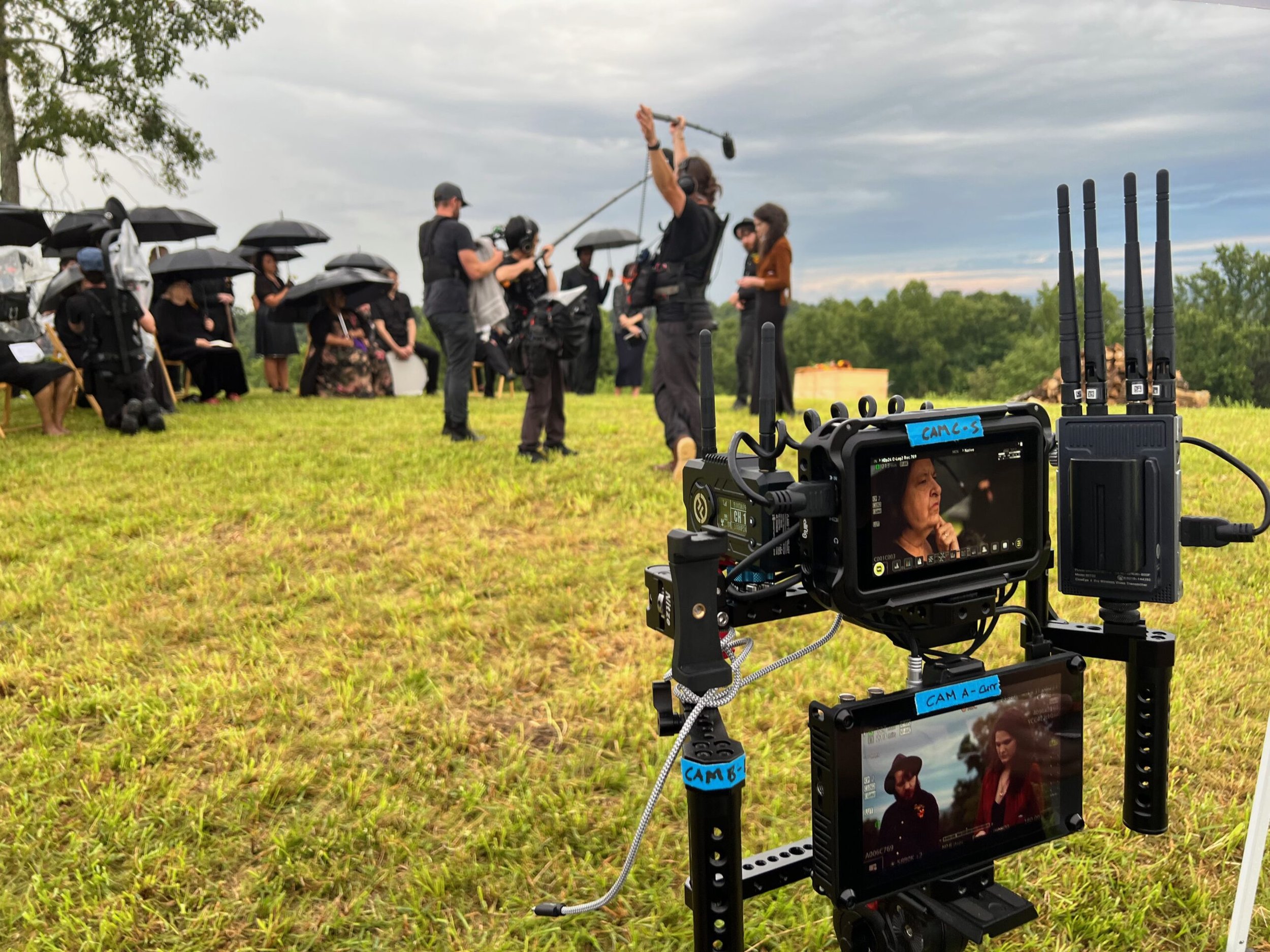This post is part of a short series where I am sharing some behind the scenes info about the making of KING COAL
An ambisonic recording device built by sound recordist, Billy Wirasnik.
Our sound mix team at Signature Post was led by Alexandra Fehrman (CODA, 2021; Everything Everywhere All at Once, 2022) who supervised the incredible team: re-recording mixer, Tim Hoogenakker; sound designer, Benjamin L. Cook; dialogue editor, Christina Chuyue Wen; and foley services by Post Creations. The sound mix hinged on emphasizing the lush environments captured by our production sound mixer, Billy Wirasnik, who recorded an incredible library of ambisonic nature recordings —birds, crickets, owls, thunder, wind, rain, rivers, creeks, forests— over the course of several years of production. We also worked with breath artist Shodekeh Talifero, who with his own body and voice made the sound of thunder, ocean waves, crickets, wind, whistles, and many other sounds. We recorded his session in a moss-floored, dense forest in the Allegheny Mountains (hats off to associate producer, Clara Haizlett, for finding this perfect outdoor sound studio). His sound art and human breath is used throughout the film as transitions and as a motif to explore the new life the coalfields are embarking upon. Sound, in addition to music, plays a key role in the film’s magical realism.


